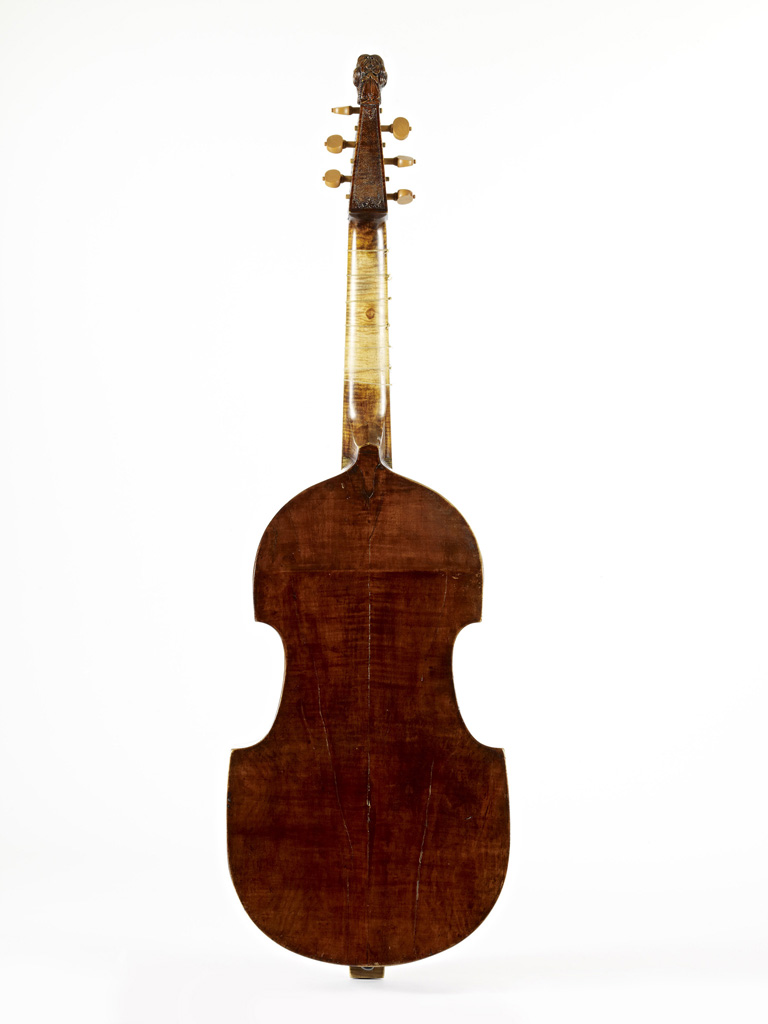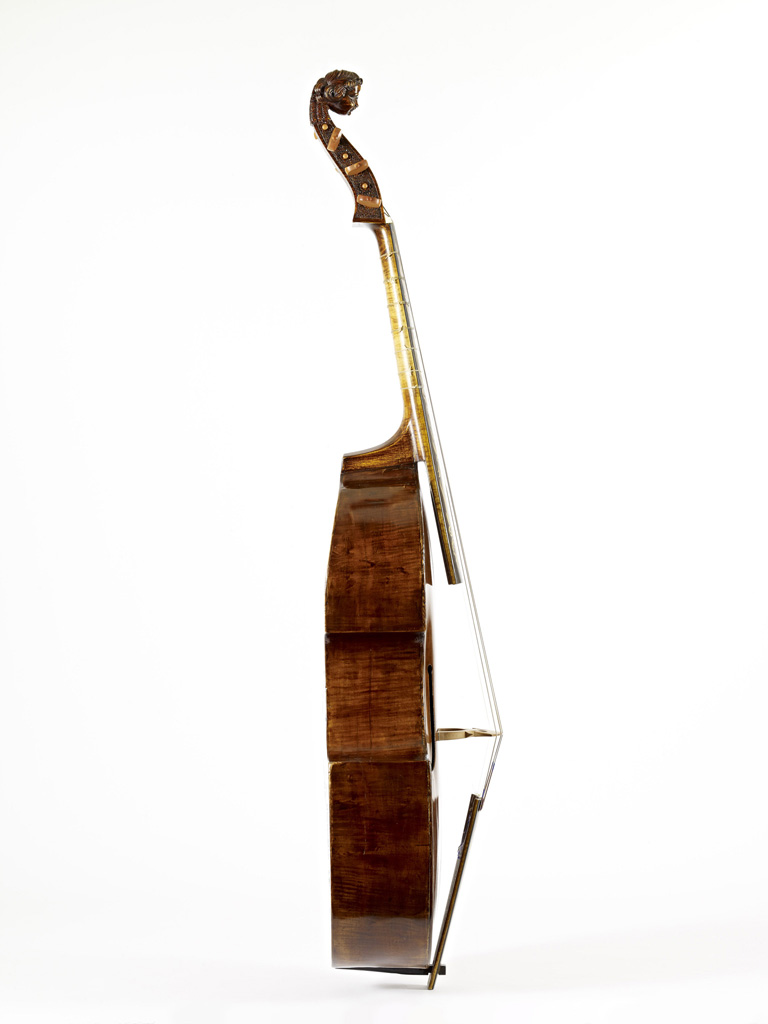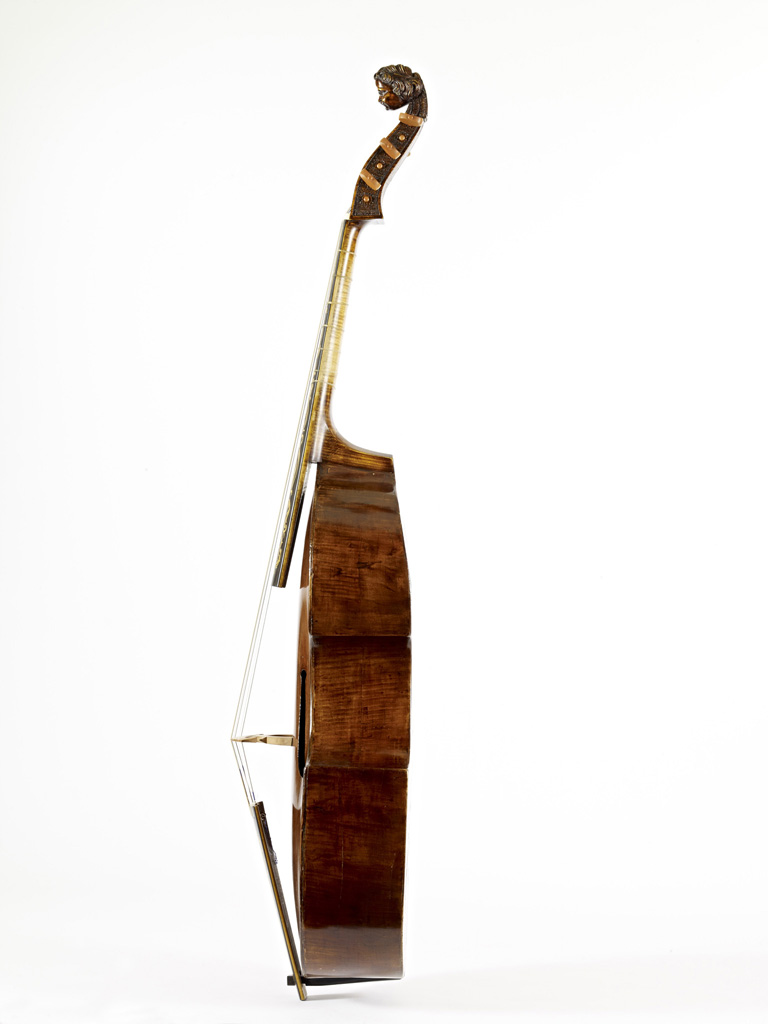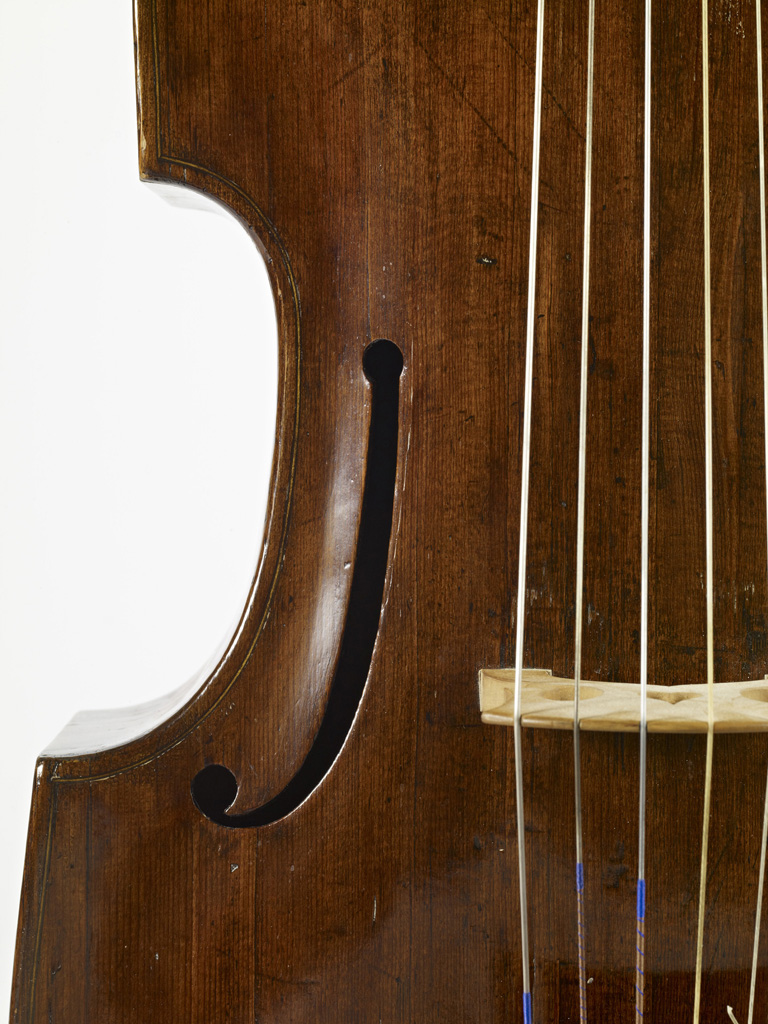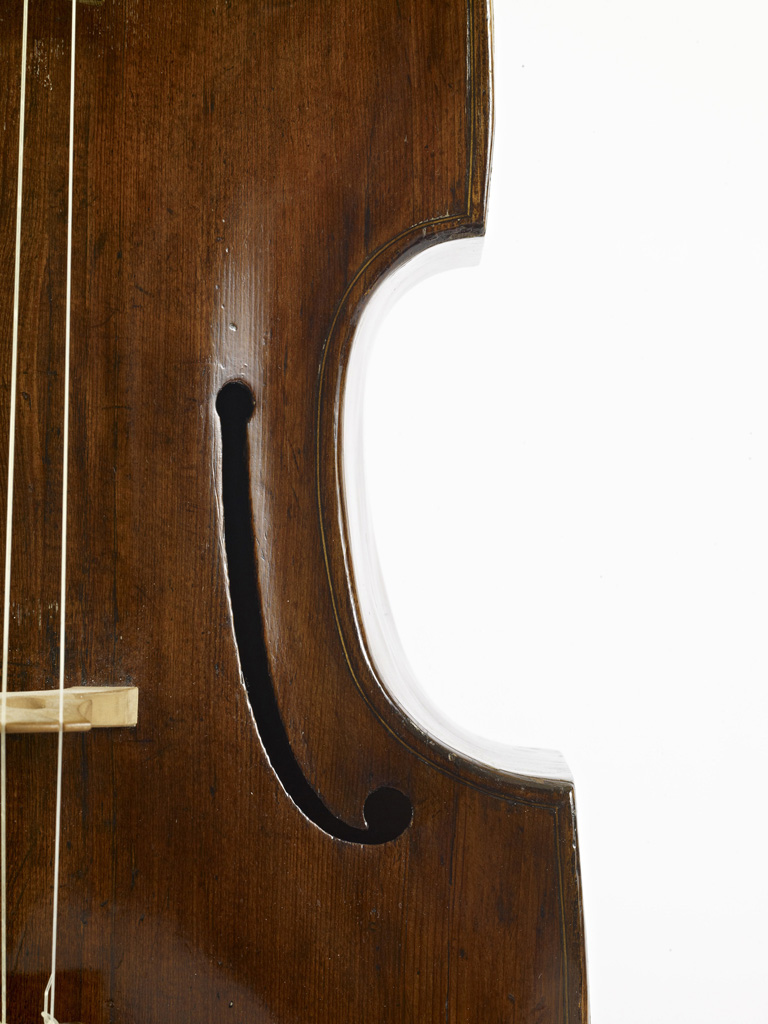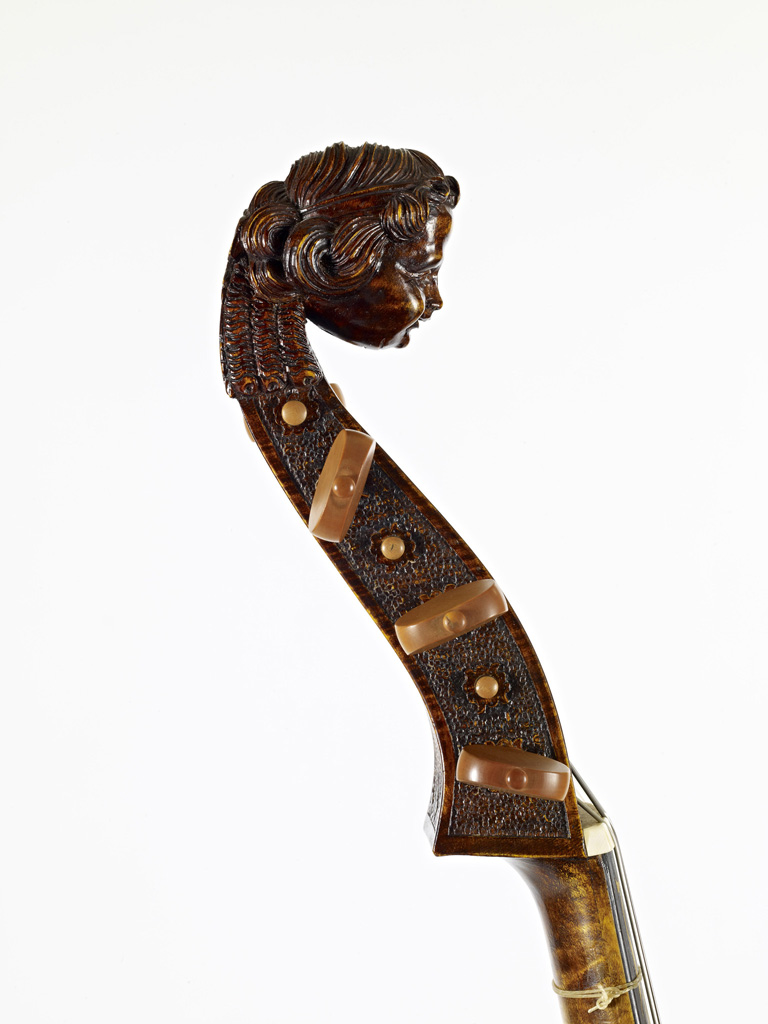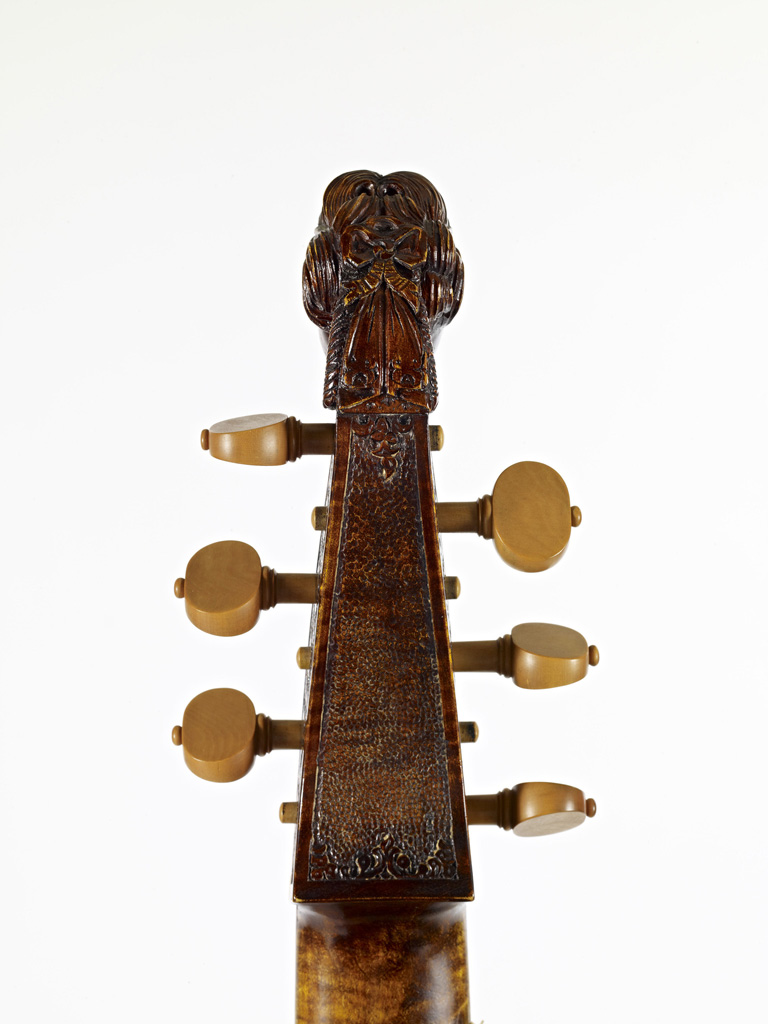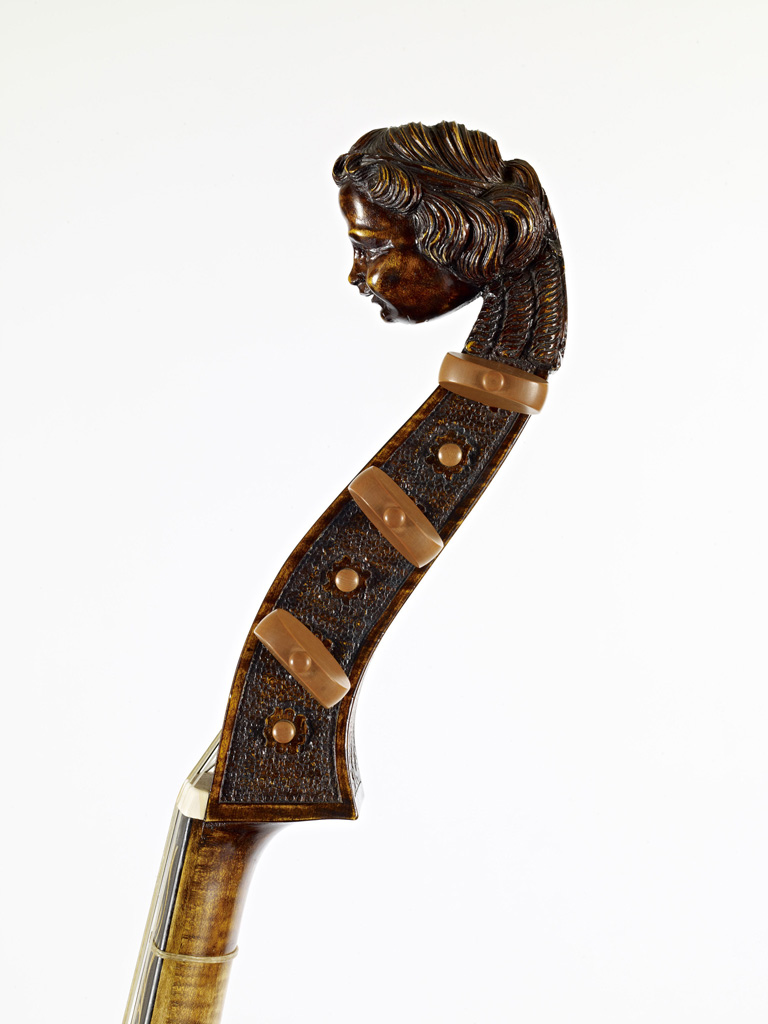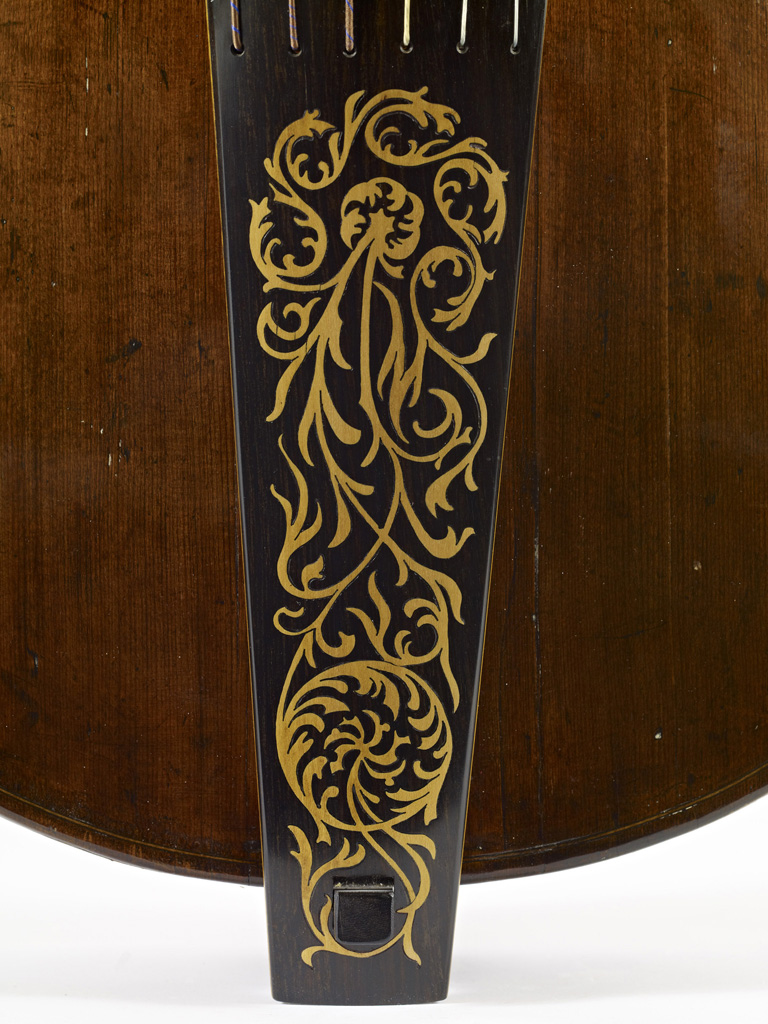The table is of two unmatched pieces with 8 to 5 growth rings per cm. The soundholes are of curious shape, like F holes with the upper eye straightened out to form a sort of J. A similar instrument, also anonymous, is in the Händel-Haus collection in Halle. The edge purfling is black-white-black.
The back is two pieces of almost slab-cut maple with irregular medium flame and wavy grain. There is no purfling. The ribs are six pieces of quartered maple with irregular medium flame.
The modern neck is maple, spliced to the original head and pegbox. A cherub head sits atop a pegbox with large flowers carved on the sides, centered on each peghole, the ground behind them stippled, as is the entire back of the pegbox. The six modern pegs are boxwood.
The modern fingerboard and tailpiece are maple with floral marquetry in ebony and boxwood. The hookbar is ebony.
The varnish is dark brown.
Body length 69.0
Body width
upper bout 30.4
center bout 21.7
lower bout 37.0
String length 71.0
Rib height
top block 9.7
fold 12.2
upper corners 12.5
lower corners 12.5
bottom block 12.4
There is no label.
Bought in April 1975 from Jacques Francais, New York.


